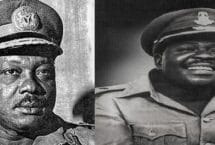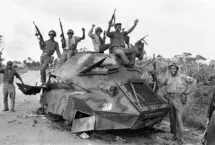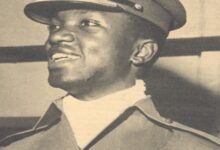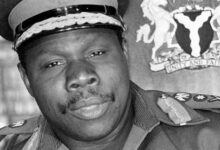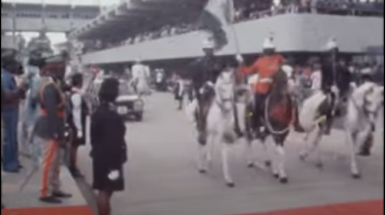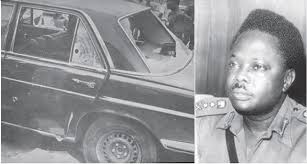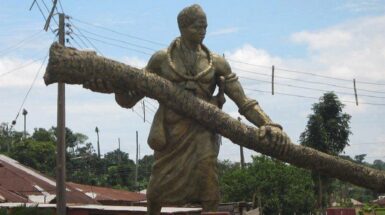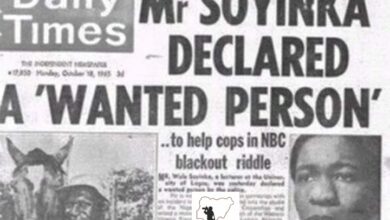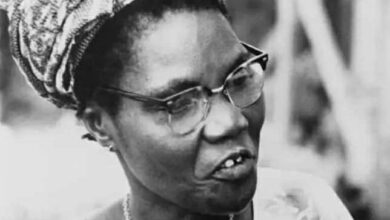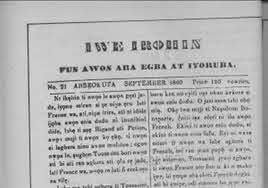The Real History of the Nigerian Army

The Nigerian Army is the largest component of the Nigerian Armed Forces, and is responsible for land warfare operations.
As at 2020, Nigeria has been ranked the 4th strongest military in Africa and the 43rd strongest military in the world by Global Fire Power surpassing the likes of Libya, Tunisia, and a many other countries especially in finance, logistics and defence budget.
History of the Nigerian Army
The history of the Nigerian Army dates back to 1863 when Lt. Glover of the Royal Navy selected 18 indigenes from the Northern part of what is now Nigeria and organized them into a local force, called the “Glover Hausas”.

The small army of locals was used by Glover during his rule as the governor of Lagos to carry out punitive expeditions in the Lagos hinterland and as well to protect British trade routes around Lagos.
In 1865, the “Glover Hausas” became a regular force and had their name changed to “Hausa Constabulary”. They performed both police and military duties for the colonial government. They later became ‘Lagos Constabulary.”
On incorporation into the West Africa Frontier Force (WAFF). In 1901, They became known as “Lagos Battalion.” In addition to the force, the British government included the Royal Niger Company (RNC), Constabulary Force in Northern Nigeria in 1886 and the oil rivers irregular in 1891.
In 1889, Lord Fredrick Lugard had formed the incipient body of what was to be known in 1890 as the West Africa Frontier Force, (WAFF), in Jebba, Northern Nigeria.
The new unit expanded by absorbing the Northern Nigeria-based elements of the Royal Niger Company (RNC) Constabulary. By the end of 1901, it had incorporated all paramilitary units in the other British dependencies into its command, thus fully meriting its designation “WAFF.”
The establishment of West African Frontier Force (WAFF) led to the merger of all units into regiment in each of the dependencies. The merger in Nigeria produced the northern Nigerian Regiment and Southern Nigerian Regiment.
The First commanders of the Southern Regiments of WAFF were Lt CHP Carter (1899-1901) and Col J Wilcox (1900-1909) respectively. The two regiments were later used for expeditions during the annexation of Nigeria by Lord Lugard between 1901 and 1903.
With the amalgamation of Nigeria in 1914, the unification of the northern and Southern Regiments came into being and this witnessed the birth of the Nigerian Regiments.
The Northern Nigerian Regiments became the 1st and 2nd Battalions of the Nigerian Regiment, while the Southern Nigerian Regiment became the 3rd and 4th Battalions of the Nigerian Regiments (NR).

The mounted infantry of the Northern Regiments became the ordinary Infantry Battalion after the Second World War. A field artillery also existed in the Northern Regiment.
With the visit of Queen Elizabeth of Britain between 28 January and 15 February, 1956, the Nigerian regiment was renamed the Queens Own Nigerian Regiments (QONR).
Also in the same year, the regionalization of the WAFF came into existence and each military force became independent of the other. As a result, the QONR became the Nigerian Military Force (NMF).
By 1st June, 1958, the British Army Council in London relinquished control of NMF to the Nigerian Government.
In 1960, when Nigeria became independent, the NMF became known as Royal Nigerian Army (RNA). When Nigeria became a republic, the RNA changed to the Nigerian Army.

In the same year, the Army changed its uniform, rank structure and instruments from those of RWAFF to new ones including green khaki uniform.
Thanks for reading the history of the Nigerian Army. OldNaija.
Questions? Advert? Click here to email us.



